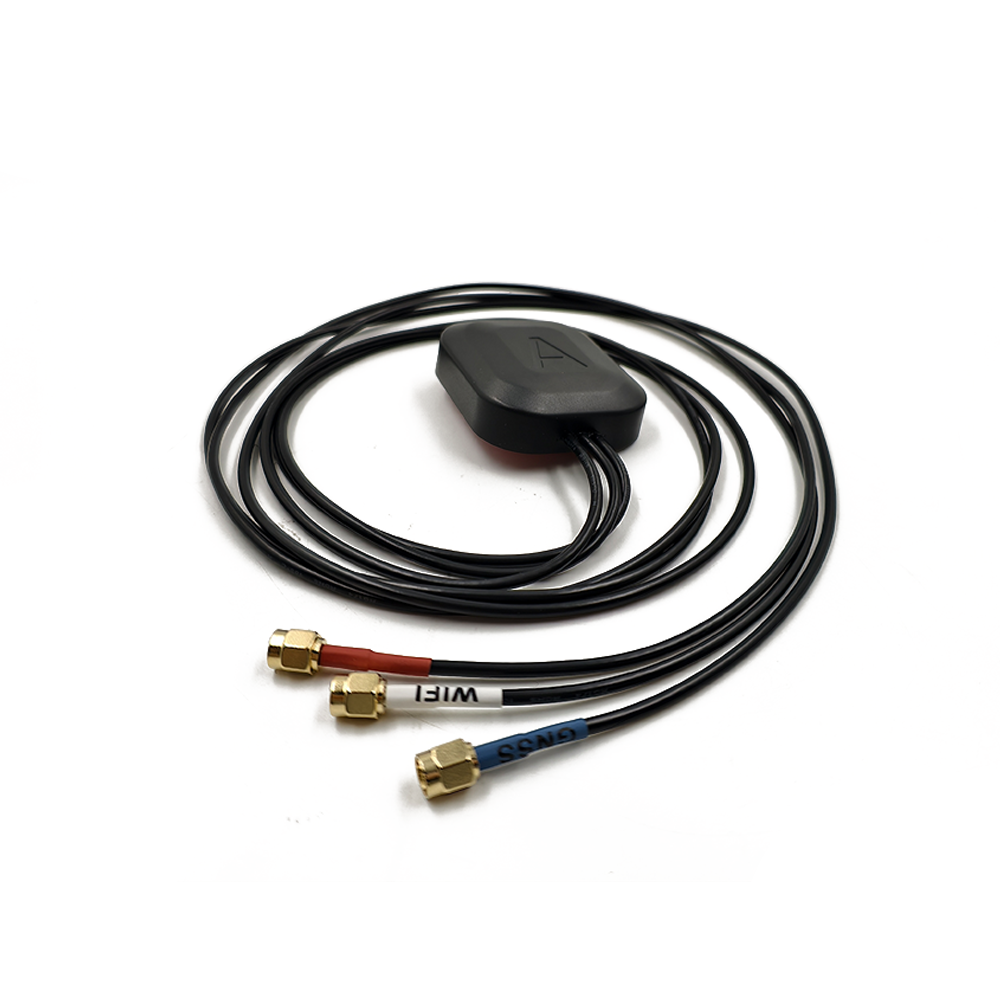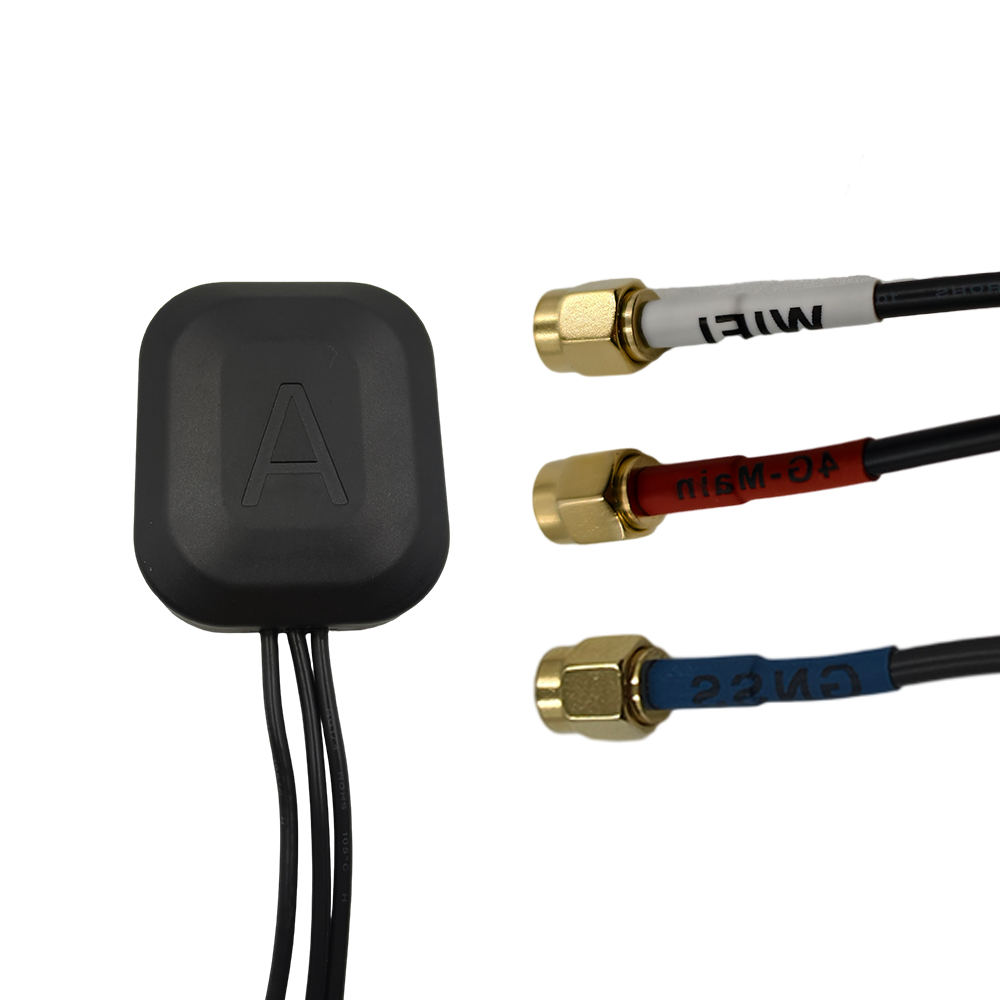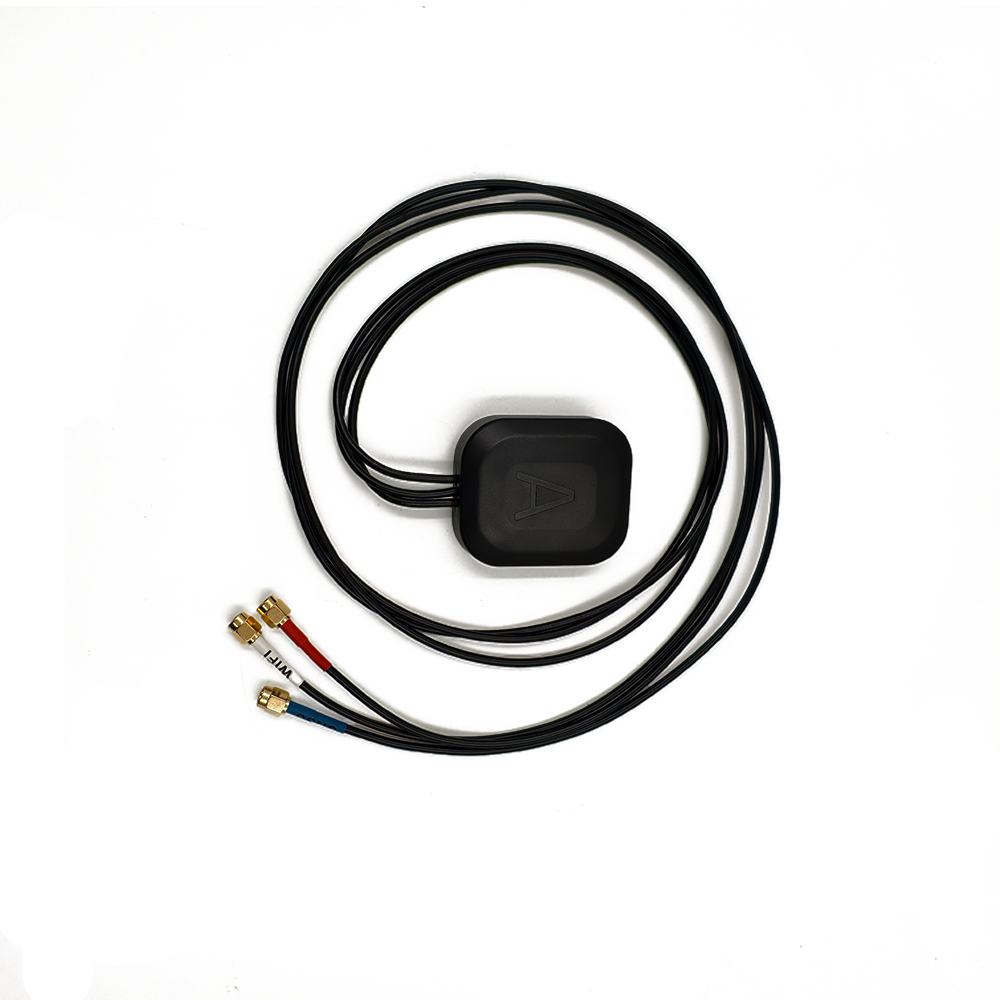Overview
A high precision multi-band GNSS antenna module is a fully integrated system-in-package (SiP) or board-level product that combines a specialized antenna element with a Low-Noise Amplifier (LNA), filtering, and often additional RF conditioning circuitry into a single, compact unit. Its purpose is to serve as the front-end for a high-precision GNSS receiver, delivering an optimized signal that enables advanced positioning techniques like Real-Time Kinematic (RTK) and Precise Point Positioning (PPP).
The key terms defining its capability are "high precision" and "multi-band." High precision distinguishes it from consumer-grade GNSS modules, which offer meter-level accuracy sufficient for navigation. High precision implies the ability to achieve decimeter or centimeter-level accuracy, a necessity for applications where error is measured in cost, safety, or efficiency. Multi-band operation is the technological cornerstone that makes this precision possible. Unlike single-band receivers that only use one frequency (e.g., GPS L1), multi-band modules receive signals on two or more frequencies from multiple satellite constellations (GPS L1/L2/L5, GLONASS G1/G2, Galileo E1/E5a/E5b, BeiDou B1/B2/B3).
This multi-band capability is crucial because it allows the receiver to perform a critical calculation: the elimination of the ionospheric delay. The ionosphere, a layer of the Earth's upper atmosphere, bends and slows down GNSS signals, introducing the largest single source of error. Since this delay is frequency-dependent, comparing the signals on two different frequencies allows the receiver to precisely measure and remove this error. This process is essential for resolving the "integer ambiguity" in carrier-phase measurements, the fundamental step required to achieve centimeter-level accuracy.
These modules are designed for integration, not for end-users. They are the core components that original equipment manufacturers (OEMs) and system integrators build into their products—autonomous robots, agricultural machinery, survey equipment, aviation systems, and timing servers. By providing a pre-optimized, robust RF front-end, they abstract away the immense complexity of RF design, allowing engineers to focus on their application rather than on the intricacies of antenna matching and signal integrity.
In essence, the high precision multi-band GNSS antenna module is the unsung hero of modern geospatial technology. It is the critical link that captures the whispers from space, amplifies them with care, filters out the noise of our world, and delivers a clean, powerful signal that empowers machines to understand their place in the world with astonishing accuracy.
Design and Construction
The design and construction of a high precision multi-band GNSS antenna module is a meticulous exercise in electromagnetic engineering, material science, and miniaturization. Every aspect is optimized to maximize signal fidelity, minimize noise and interference, and ensure performance stability across a wide range of operating conditions.
The Antenna Element: The Core Transducer
At the physical heart of the module lies the antenna element, responsible for converting electromagnetic waves into electrical currents. For high-precision multi-band applications, the almost universal choice is a ceramic patch antenna. This is a carefully engineered conductor printed onto a ceramic substrate.
Ceramic Substrate: The high dielectric constant of the ceramic allows for a physically smaller antenna element that still resonates at the desired low GNSS frequencies (1.1 – 1.6 GHz). This is critical for miniaturization.
Multi-Band Design: Creating a single element that resonates efficiently across multiple, disparate frequency bands is the primary challenge. This is achieved through sophisticated techniques:
Stacked Patches: Multiple layers of ceramic, each with a patch of a different size, are used. A larger patch for lower frequencies (e.g., L2) is placed beneath a smaller patch for higher frequencies (e.g., L1).
Slotted/Aperture-Coupled Patches: Precise cuts or slots are introduced into a single patch to excite multiple resonant modes. Alternatively, the patch is electromagnetically coupled through an aperture in the ground plane for better bandwidth.
Radiation Pattern: The patch is designed to have a hemispherical (or "bulge") radiation pattern, providing high gain towards the horizon (where most satellites are) and a sharp null below the horizon to reject multipath signals reflected from the ground.
The Ground Plane: The Electrical Foundation
The antenna element does not operate in isolation; it requires a ground plane. This is a continuous layer of conductive material (typically copper on the PCB) located beneath the patch. The ground plane is critical for:
Pattern Shaping: It defines the antenna's directional characteristics, ensuring energy is radiated and received effectively towards the sky.
Isolation: It acts as an electromagnetic shield, isolating the sensitive antenna from the noisy digital circuitry of the host device (processors, memory, power regulators) that would otherwise detune the antenna and inject noise.
Low-Noise Amplifier (LNA): The Signal Guardian
GNSS signals are incredibly weak by the time they reach Earth. The integrated LNA is therefore non-negotiable. Its performance is paramount:
High Gain: It must provide significant amplification (typically 25-40 dB) to overcome subsequent losses in the cable and connector leading to the receiver.
Ultra-Low Noise Figure: This is the most critical specification. The LNA must add an absolute minimum of its own electronic noise (typically < 1.0 dB for high-end modules). A poor noise figure irreparably corrupts the signal-to-noise ratio (SNR), making weak signal tracking and high-precision positioning impossible.
Linearity: It must handle strong out-of-band signals (e.g., from nearby cellular transmitters) without going into compression or generating intermodulation products that could mask the desired GNSS signals.
Filtering: The RF Bouncer
The electromagnetic environment is hostile, especially when the module is integrated into a device with radios, processors, and motors. Bandpass filters are essential to protect the LNA and ensure only GNSS signals pass.
SAW Filters: Surface Acoustic Wave (SAW) filters are commonly used for their sharp roll-off and excellent out-of-band rejection. They are placed between the antenna and the LNA to block powerful interferers before they can overload the sensitive amplifier.
Physical Construction and Integration
Module Packaging: The antenna, LNA, and filters are integrated into a single package. This can be a Surface-Mount Device (SMD) that is reflow-soldered directly onto the user's PCB, or a standalone module with a protective casing and a connector.
Radome: The top of the module is a protective radome. This is molded from a material that is RF-transparent (low dielectric constant and loss tangent), such as high-grade plastic or ceramic composite. It must protect the delicate ceramic patch from physical damage and environmental factors.
Size and Mounting: A key design driver is miniaturization. Modules can be as small as 25x25mm. They are designed for easy mounting, often with recommendations for a keep-out area on the PCB to ensure optimal performance.
In summary, the construction of these modules represents a deep integration of passive and active RF components, all meticulously co-designed to work in harmony to deliver a pristine GNSS signal from a robust and easy-to-integrate package.
Working Principles
The operation of a high precision multi-band GNSS antenna module is the first and most critical step in a chain of signal processing that culminates in a precise position fix. Its role is purely analog and RF-focused: to capture, filter, and amplify the signals from space with maximum fidelity.
Capturing the Faint Whisper:
The process begins with the antenna element. As electromagnetic waves from GNSS satellites pass through the radome, they induce tiny, oscillating electrical currents in the patch conductor. The patch is designed to be most sensitive to Right-Hand Circularly Polarized (RHCP) waves, which is the polarization used by GNSS signals. This provides a inherent level of rejection to reflected signals, which often become partially Left-Hand Circularly Polarized (LHCP).
Rejecting the Noise: Spatial and Frequency Filtering
Before amplification, the signal undergoes critical filtering:
Spatial Filtering: The antenna's radiation pattern provides the first filter. Its high gain towards the horizon prioritizes direct signals from satellites, while its null below the horizon attenuates multipath signals reflected from the ground or the host device's platform.
Frequency Filtering: The received signal contains a vast spectrum of RF energy—not just GNSS, but also noise and powerful transmissions from cellular, WiFi, Bluetooth, and other services. The integrated bandpass filter acts as a "gatekeeper," allowing only energy in the GNSS bands (approximately 1150-1610 MHz) to pass through to the next stage. This prevents strong out-of-band signals from overloading the subsequent amplifier.
Amplification with Care: The Role of the LNA
The filtered signal, now purified but still incredibly weak, is passed to the Low-Noise Amplifier (LNA). The LNA's job is to boost the amplitude of this signal by a factor of hundreds or thousands (decibels are a logarithmic scale). However, all electronic components generate noise due to the thermal agitation of electrons. The supreme quality of a high-precision LNA is that it adds the absolute minimum amount of this thermal noise. Its low Noise Figure ensures that the amplified signal, while stronger, has not been drowned in a sea of electronic hiss. Preserving the signal-to-noise ratio (SNR) is everything; a high SNR is what allows the receiver to maintain lock on satellites, track weaker signals, and perform the precise carrier-phase measurements needed for centimeter accuracy.
Delivery to the Receiver:
The now-amplified and clean RF signal is output from the module, typically via a small coaxial cable or through embedded transmission lines on the PCB, to the GNSS receiver chip. The receiver's job is to digitize this analog signal and perform the complex digital signal processing (DSP): correlating with satellite codes, tracking phases, demodulating navigation data, and ultimately calculating a position.
The Critical Impact of Multi-Band Data:
The module's ability to provide multiple, clean signals (L1, L2, L5) is what enables the receiver's algorithms to work their magic. The receiver takes the carrier-phase measurements from, for example, the L1 and L2 signals. Because the ionospheric delay affects each frequency differently, the difference between the two measurements (Φ_L1 - Φ_L2) is directly proportional to the total electron content in the signal path. This allows the receiver to precisely model and remove this largest source of error, a process that is fundamental to rapid and reliable integer ambiguity resolution in RTK and PPP.
In essence, the antenna module is a signal pre-conditioner. It doesn't calculate position; it ensures that the raw material the receiver works with is of the highest possible quality. A perfect receiver cannot fix a signal that has been corrupted by a poor antenna or a noisy amplifier. The module's working principle is one of preservation and enhancement, ensuring the faint whispers from space are heard clearly above the roar of the modern world.
Advantages and Challenges
-
The adoption of high precision multi-band GNSS antenna modules offers compelling advantages for OEMs and system integrators, but it also introduces specific challenges that must be carefully managed in the product design process.
Advantages:
Simplified Design and Faster Time-to-Market: This is the primary advantage. Designing a high-performance GNSS RF front-end from discrete components requires deep expertise in RF and electromagnetic theory. By using a pre-tuned, pre-matched module, engineers can effectively outsource this complexity, significantly reducing development time, cost, and risk.
Guaranteed Performance: Reputable module manufacturers provide comprehensive performance specifications and data sheets. Integrators can be confident that the module will perform as specified in terms of gain, noise figure, and bandwidth, removing guesswork from the design process.
Miniaturization: Modules pack a high-performance antenna, LNA, and filters into an extremely small form factor that would be difficult to achieve with discrete components, which is crucial for space-constrained applications like drones, wearables, and handheld devices.
Improved Reliability: Modules are factory-tested and built with components that are matched and optimized to work together. This typically results in higher overall reliability and performance consistency compared to a discrete design that may be sensitive to component tolerances and PCB layout variations.
Multi-Band Performance Out-of-the-Box: The module delivers ready-to-use multi-band signals, which is far simpler than designing and tuning multiple separate antenna elements for each band.
Challenges and Considerations:
Cost: High-quality modules, with their specialized ceramics, premium LNAs, and rigorous testing, are more expensive than a simple discrete patch antenna. This increases the bill of materials for the end product.
Integration is Not "Plug-and-Play": While simpler than a discrete design, successful integration still requires careful attention to the manufacturer's guidelines. Critical factors include:
PCB Layout: The host PCB must provide an adequate ground plane as specified. The placement of the module, the routing of transmission lines, and the isolation from noise sources are crucial. A poor layout can severely degrade performance.
Power Supply Noise: The LNA within the module requires a clean, stable DC power source. Noise on the power rail can be injected into the LNA and amplified, corrupting the GNSS signal. High-quality low-dropout regulators (LDOs) and filtering are essential.
Keep-Out Area: Most modules require a designated "keep-out" area on the PCB—a region free of copper and components—to allow the antenna to radiate efficiently.
System-Level Interference: The module can be susceptible to noise generated by other components in the system (processors, displays, other radios). Thorough EMI testing and mitigation (shielding, filtering) are often required at the system level, not just the module level.
Limited Customization: A module is a fixed solution. While it offers guaranteed performance, it does not allow for optimization for a very specific use case in the way a custom-designed RF front-end could.
Performance Trade-Offs: Due to their small size, the antenna elements in modules may have slightly lower gain or less effective multipath rejection compared to larger, external survey-grade antennas. The designer must ensure the module's performance is adequate for the application's accuracy requirements.
In summary, the module offers a path to high performance with reduced engineering overhead. However, it demands a disciplined approach to system integration and power management to realize its full potential, and it comes at a higher unit cost than a basic solution.
Applications and Future Trends
-
The high precision multi-band GNSS antenna module is a key enabling technology, finding its way into a rapidly expanding universe of applications that demand reliable, accurate positioning.
Applications:
Autonomous Systems and Robotics: This is a massive growth area. Modules provide the precise location for:
Agricultural Robots: For automated weeding, harvesting, and crop scouting.
Warehouse and Logistics Robots: For navigation within fulfillment centers and yards.
Last-Mile Delivery Robots: For navigating sidewalks and roads.
Unmanned Aerial Vehicles (UAVs): For drone-based mapping, surveying, and delivery, enabling PPK/RTK workflows without ground control points.
Precision Agriculture: Integrated into tractors, combines, and sprayers for auto-steering and variable rate application (VRA) of seeds, fertilizer, and pesticides. This reduces overlap, saves inputs, and increases yield.
Advanced Driver-Assistance Systems (ADAS) and Autonomous Vehicles: While full autonomy requires a sensor suite, multi-band GNSS modules provide a highly accurate and absolute positioning reference, crucial for lane-level navigation, HD map creation, and validation.
Surveying and Mapping: While high-end surveyors use external antennas, modules enable a new class of compact, lightweight equipment: handheld data collectors, wearable sensors, and backpack mapping systems for GIS professionals.
Marine and Aviation: For precision navigation, docking, and autonomous operations of vessels and aircraft.
Timing and Synchronization: Providing precise time references for telecommunications networks (5G base station synchronization), financial trading networks, and energy grid management.
Future Trends:
Tighter Integration with IMUs and Sensors: The future is not just a GNSS module but a Positioning Engine. We will see more modules that integrate a multi-band GNSS receiver, an antenna, and an inertial measurement unit (IMU) into a single package. This enables deep sensor fusion for continuous navigation during GNSS outages (e.g., in urban canyons, tunnels).
AI-Enhanced Performance: Artificial intelligence and machine learning will be used at the chip level to improve signal tracking, predict and mitigate multipath, and resolve integer ambiguities faster and more reliably in challenging environments.
Anti-Jamming and Anti-Spoofing (AJA): As systems become more autonomous, protecting them from intentional interference (jamming) or malicious fake signals (spoofing) becomes a safety-critical requirement. Future modules will integrate hardware and software solutions for AJA.
Leveraging Low-Earth Orbit (LEO) Satellite Signals: Some companies are beginning to explore using signals from LEO satellite constellations (e.g., for communication) to augment GNSS. This could provide stronger signals and improved robustness. Future modules may be designed to receive these signals as well.
Further Miniaturization and Reduced Power: The trend towards smaller, more power-efficient designs will continue, enabling integration into smaller IoT devices, wearables, and asset trackers.
Cloud-Based PPP-RTK Services: Modules will be designed to seamlessly work with precise point positioning (PPP) correction services delivered via cellular cloud, making centimeter-level accuracy accessible anywhere with cellular coverage without a local base station.
Conclusion
The high precision multi-band GNSS antenna module is far more than a simple component; it is a fundamental enabler of the modern geospatial ecosystem. By distilling the immense complexity of RF design into a reliable, compact, and integratable package, it has democratized access to centimeter-level accuracy. It has lowered the barrier to entry for innovators and engineers, allowing them to focus on building revolutionary applications rather than on the intricacies of antenna matching and low-noise amplification.
Its role is foundational. It provides the pristine raw data—the high-SNR, multi-frequency observations—that empowers advanced algorithms to overcome the errors inherent in satellite navigation. It is the critical starting point for the workflows that guide autonomous machines, map our world in detail, and synchronize our critical infrastructure.
As we move towards a future increasingly dependent on autonomous systems and hyper-accurate spatial data, the importance of this technology will only grow. The trends point towards even greater integration, intelligence, and resilience, solidifying the module's role as the indispensable "eye" that allows machines to understand their place in the world with ever-greater confidence and precision. It is a silent partner in the background, but without it, the promise of a truly located and autonomous future would remain out of reach.




































































 Language
Language
 En
En Cn
Cn Korean
Korean

 Home >
Home > 








 18665803017 (Macro)
18665803017 (Macro)













